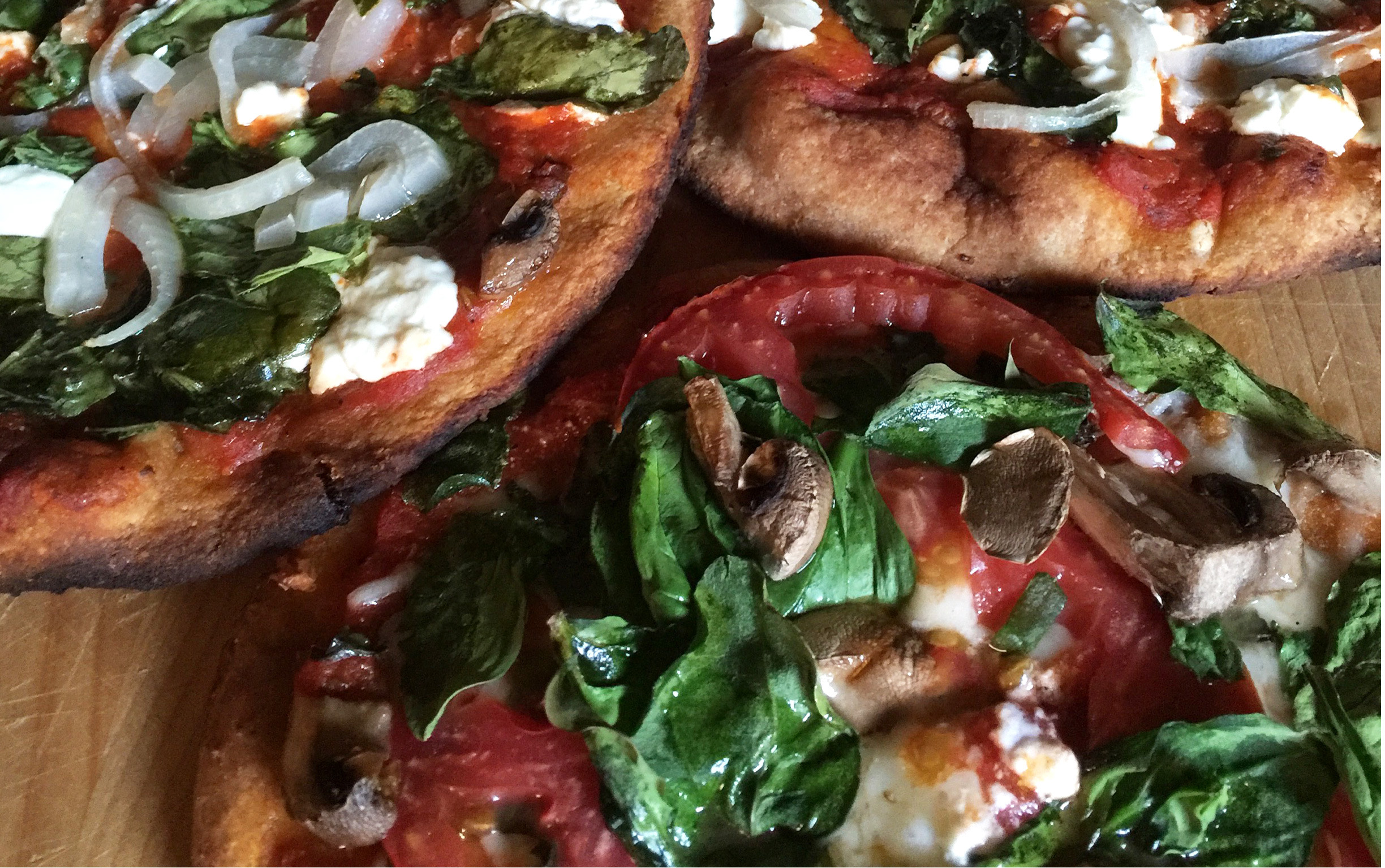Transform your favorite recipes by adding fresh herbs. Here’s how.
One of my favorite things about summer is having access to all of the wonderful and diverse flavors of fresh herbs growing in my garden and sold at the market. From the slightly sweet taste of basil in pesto to the spiciness of oregano on a pizza, herbs provide an incomparable burst of flavor to food.
Using herbs is also a great way to reduce fat, sugar and salt in recipes without sacrificing flavor. Many, such as oregano and peppermint, contain antioxidants, and most are packed with vitamins and minerals, including A, C, E, calcium and iron.
Even if you don’t have a green thumb, herbs are easy to grow. Most herbs love hot, dry and sunny conditions, which make them perfect for southern summer gardening. In addition to being easy to grow, many produce flowers, smell lovely and attract butterflies.
If you want to try your hand at growing your own herbs, you can choose from planting in a container on your patio, which is perfect for apartment or condo dwellers; using a window box; or growing them directly in the ground. Aim for a spot that gets at least six hours of sunshine for the best results. I like to keep my herbs as close to the kitchen door as possible so that I can easily step outside to snip a bit before preparing foods.
When experimenting with fresh herbs in recipes, keep in mind that cutting them finely will release the most flavor. If your recipe calls for one teaspoon of dried herbs, one tablespoon of the fresh variety is a general equivalent. Fresh herbs are best added at the end of cooking, whereas dried are added in the beginning.
Soft herbs like basil, parsley, cilantro and tarragon have soft, tender stems that need to be treated like bouquets of flowers. Snip the bases of the stems and put a bunch into a glass of fresh water, changing out the water every day or two if it starts to cloud. Basil should be kept at room temperature, but other soft herbs should be loosely covered with a plastic bag, then placed in the fridge. Store hard, woody stemmed herbs like rosemary, oregano and thyme by wrapping them first in a damp paper towel, then loosely in plastic wrap before placing them in your vegetable crisper.
Fresh herb uses
Here are a few simple ideas to get you started with using fresh herbs:
- Make a rub for meat, fish or veggies. Using any combination of herbs you have on hand, throw the leaves into the food processor whole (or do by hand with a mortar and pestle), then pulse until a paste forms. Add a drizzle of olive oil to hold everything together. Spread on meat or veggies before grilling.
- Make salad dressing zestier. Add chopped herbs such as basil, rosemary, dill, chives and tarragon to oil and vinegar, along with a squeeze of lemon juice, chopped garlic and some Dijon mustard for a fresh, summery dressing.
- Add herbs to drinks. For non-alcoholic drinks like iced tea or lemonade and alcoholic cocktails try muddling (a fancy term for mashing) some basil and or mint in your beverage for a flavor-packed punch! You can also add a whole sprig to your beverage to make it look prettier.
- Top off a homemade flatbread pizza. Add chopped basil and or oregano to take a ho-hum cheese pizza and make it a gourmet treat. See my flatbread pizza done on the grill in the below photo for inspiration.
- Stuff rosemary sprigs and sliced lemons under the skin of chicken. A simple grilling trick for the most moist and delicious meat ever. Hold the skin in place with a toothpick. Be sure to toss the toothpick and the chicken skin!
- Boost guacamole to a whole new level. Combine cilantro with avocado, chopped tomato, corn and lime juice to take guacamole from good to great. Top fish, homemade tacos or tortillas with this fresh dip that is loaded with heart-healthy unsaturated fat.
Guide to fresh herbs
Not sure which herbs to use? Below is a guide to some of the more common herbs and how to use them:
Mint
Taste: cool and peppery
Uses: desserts, cocktails, teas, Thai and Middle Eastern foods, fruit dishes
Basil
Taste: peppery and slightly sweet
Uses: tomato dishes, pesto, Mediterranean dishes, pizza, pasta
Rosemary
Taste: piney, pungent
Uses: sauces, soups, grilled meats such as pork or poultry, infused oils, potatoes
Thyme
Taste: lemony and peppery
Uses: nearly any meat, fish, poultry or vegetable. It pairs wells with basil, sage, oregano or marjoram.
Tarragon
Taste: an anise flavor similar to licorice
Uses: foods that easily absorb other flavors, such as chicken, eggs and scallops
Oregano
Taste: a mix of sweet and spicy
Uses: Mediterranean foods (often Italian) such as pastas, pizza or roasted beef
Dill
Taste: tangy, clean and earthy
Uses: fish, creamy dips, tzatziki sauce, European and Middle Eastern foods
Cilantro
Taste: bright and citrusy
Uses: Mexican, Indian and Vietnamese dishes
Next time you want your favorite dishes to shine a little brighter, without extra salt, sugar or fat, try enhancing them with some fresh herbs. Whether you grow them yourself or buy them from the farmers market or grocery store, why not experiment with a few herbs this summer and take simply prepared meals from good to great?
Stacey Kendrick, MS, is a health educator with more than 20 years of experience in wellness and population health. She spent much of her career at Vanderbilt’s Faculty/Staff Wellness Program and currently works in Strategic Marketing at Vanderbilt. She is mother to two adult daughters. In her free time, she teaches healthy cooking classes, runs, gardens and enjoys backyard bonfires.

Pin this to your food, herbs and gardening boards on Pinterest.


